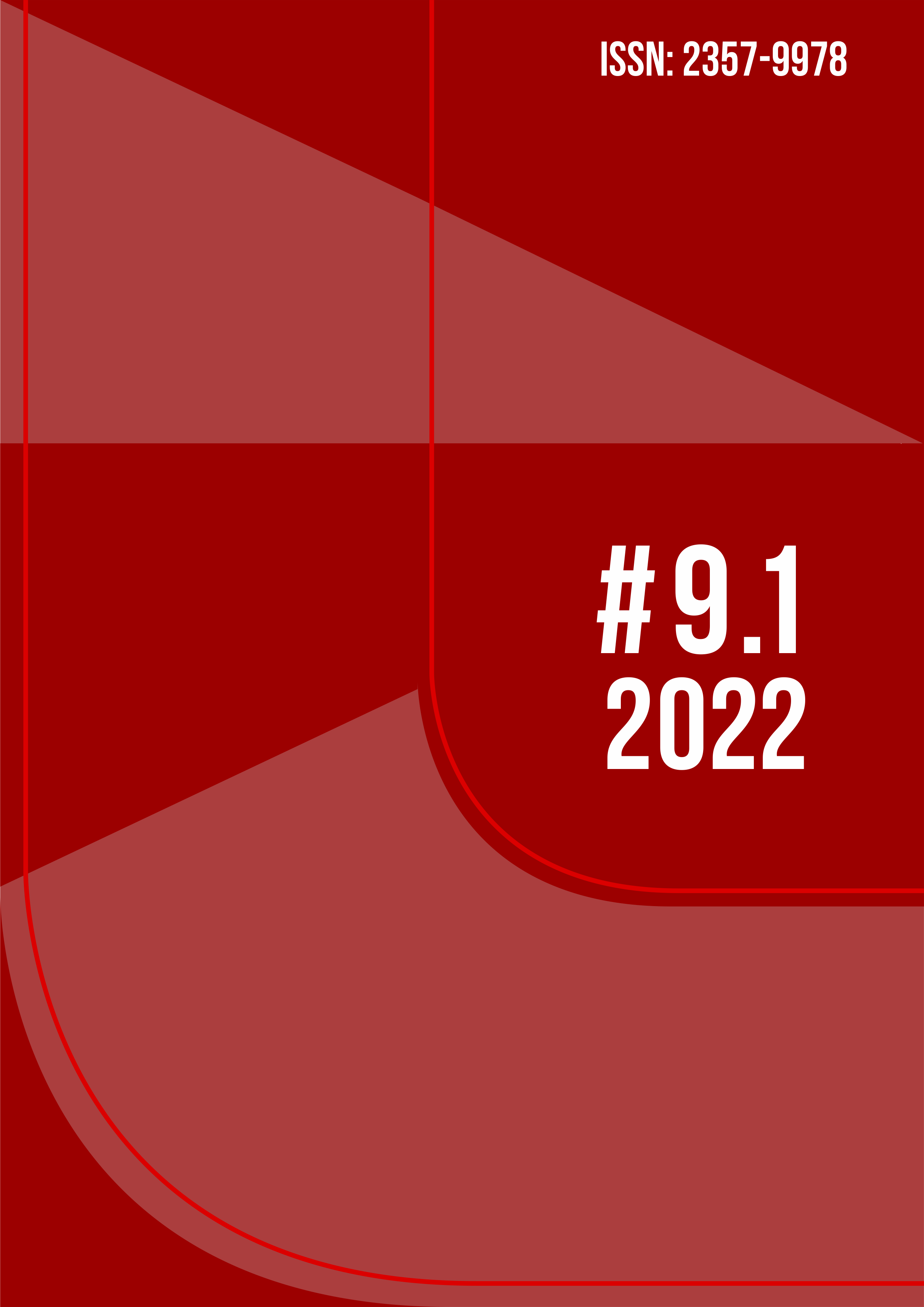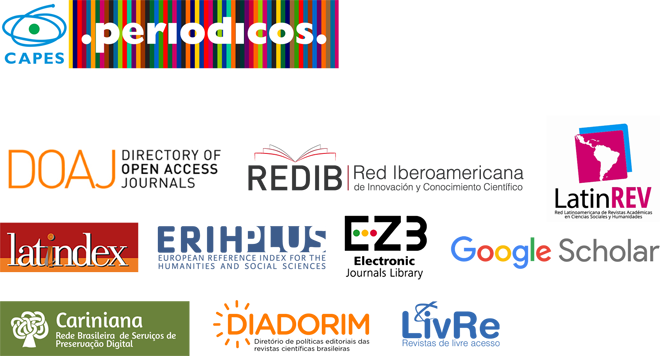Freud, Warburg and the Gods in Exile
DOI:
https://doi.org/10.36025/arj.v9i1.29635Keywords:
Art, Freud, Paganism, Psychoanalysis, WarburgAbstract
Warburg comments, in his study of the frescoes in the Schifanoia Palace of Ferrara, that although his initial inclination was to deal with beautiful objects, the problems posed by the decipherment of the complex iconography of this Renaissance saloon led him to the dark regions of astral superstition. In the European tradition, he warns, the ancient gods were incorporated, without interruption, as demons to the Christian worldview. In these Schifanoia frescoes, then, the gods of Olympus, who, under the influence of the East, assumed the government of the planets, lend to culture their own names and power for astrological purposes. This idea of “gods in exile”, which is already found in Heinrich Heine, was also re-signified by Freud in his article The ominous (Das Unheimlich): the double has become a terrifying figure like these gods, who, after the ruin of their religion, became demons. What, then, is the relationship between the unconscious and these gods in exile?
Downloads
References
AGAMBEN, Giorgio. Infancia e historia. Adriana Hidalgo editora. Buenos Aires, 2001.
AGAMBEN, Giorgio. Aby Warburg y la ciencia sin nombre. En: La potencia del pensamiento, Adriana Hidalgo editora, Buenos Aires, 2º edición, 2018. Pag.157-187.
BEUTIN, Wolfgang y otros. A History of German literatura. From the Beginnings to the Present Day. Edition Routledge. London.2005
BINSWANGER, Ludwig, WARBURG, Aby. La curación infinita. Historia clínica de Aby Warburg. Adriana Hidalgo editora. Buenos Aires, 2007.
DIDI-HUBERMAN, Georges. La imagen superviviente. Historia del arte y tiempo de los fantasmas según Aby Warburg, Abada editores, Madrid. 2009.
DIDI-HUBERMAN, Georges, Prefacio, Saber-movimiento (el hombre que le hablaba a las mariposas), 1998 en Aby Warburg y la imagen en movimiento, Libros UNA, Buenos Aires, 2017.
FERREYRA, Norberto. Trauma, duelo y tiempo. Una función atea de la creencia. Ediciones Kliné. Argentina.2000.
FORSTER, Kurt W. Introducción en El renacimiento del paganismo. Aportaciones a la historia cultural del Renacimiento europeo. Alianza editorial. Madrid.2005. Pag.11-56.
FREUD, Sigmund, ¿Debe enseñarse el psicoanálisis en la Universidad? (1919), Nota introductoria de James Strachey en: Obras completas, Tomo XVII, Amorrortu editores.Buenos Aires, 1º reimpresión.1986.Pag.167-171
FREUD, Sigmund, Lo ominoso en en: Obras completas, Tomo XVII, Amorrortu editores.Buenos Aires, 1º reimpresión.1986. Pag.219-251.
GALVEZ, Pedro, Edición y notas en HEINE, Heinrich. Los dioses en el exilio. España.1 983.
GOMBRICH, Ernst. La ambivalencia de la tradición clásica en Tributos, Versión cultural de nuestras tradiciones, Fondo de cultura económica, México, 1991. Pag.116-137
GOMBRICH, Ernst. Aby Warburg, una biografía intelectual. Alianza Forma. Madrid. 2º edición.1992.
GOYA Y LUCIENTES, Francisco de. El sueño de la razón produce monstruos, Aguafuerte sobre papel, 1797-1799.
HEINE, Heinrich. Los dioses en el exilio. Editorial Bruguera. España.1983.
HEINE, Heinrich. Los espíritus elementales en Los dioses en el exilio. Editorial Bruguera. España.1983
LACAN, Jacques. Seminario V. Las formaciones del inconsciente, Editorial Paidos, Buenos Aires, 1999.
LACAN, Jacques, Seminario VIII, La transferencia, Editorial Paidós, Buenos Aires, 4º reimpresión, 2009. LACAN, Jacques, Lecon 11 Mai de 1966 en: le Séminaire L´objet de la psychanalyse, 1965-1966. www.staferla.free-fr .13/02/2020.
LACAN, Jacques, Lecon 16 Décembre de1964 en Séminaire XII, Problèmes cruciaux de la psychanalyse 1964-1965. www.staferla.free-fr 14/02/2020.
LACAN, Jacques. A Jakobson en Seminario XX “Aún”, Editorial Paidós, Argentina, 1989. Pag. 23-35.
LACAN, Jacques,”La subversión del sujeto y dialéctica del deseo en el inconsciente freudiano” en Escritos 2, Buenos Aires.2008. Pag.735-787.
LACAN, Jacques, “Quizás en Vincennes” en: Otros escritos, Editorial Paidós, Buenos Aires, 2012. Pag.333-335.
LACAN, Jacques “La equivocación del sujeto supuesto saber” en Otros escritos, Editorial Paidós, Buenos Aires, 2012. Pag.349-360.
MANNONNI, Octave. Ya lo sé pero aún así. La otra escena o claves de lo imaginario. Amorrortu editores. Buenos Aires, 1973. Pag.9-27.
PANOFSKY, Erwin. ¿Qué es el barroco? Sobre el estilo. Tres ensayos inéditos. Editorial Paidós, España. 2000. Pag.35-111.
PANOFSKY, Erwin, SAXL, Fritz, Mitología clásica en el arte medieval, Sans Soleil, Buenos Aires, 2016.
PANOFSKY, Erwin. Renacimiento y renacimientos en el arte occidental. Alianza editorial. 3ºreimpresión, Madrid.2006.
PHELAN, Anthony. Reading Heinrich Heine. Cambridge University Press. London.2009
WARBURG, Aby. Arte italiano y astrología internacional en el Palazzo Schifanoia de Ferrara en: El renacimiento del paganismo. Aportaciones a la historia cultural del Renacimiento europeo. Alianza editorial. Madrid.2005. Pag. 415-438.
WARBURG, Aby .Profecía pagana en palabras e imágenes en la época de Lutero. El renacimiento del paganismo. Aportaciones a la historia cultural del Renacimiento europeo. Alianza editorial. Madrid.2005. Pag.445-511.
Downloads
Published
How to Cite
Issue
Section
License
Copyright (c) 2022 Andrés Barbarosch (Autor)

This work is licensed under a Creative Commons Attribution-NonCommercial-ShareAlike 4.0 International License.

This work is licensed under a Attribution-NonCommercial-ShareAlike 4.0 International (CC BY-NC-SA 4.0) License.
Authors retain copyright, while licensing their work under a Attribution-NonCommercial-ShareAlike 4.0 International (CC BY-NC-SA 4.0) License.


 English
English Português (Brasil)
Português (Brasil)
